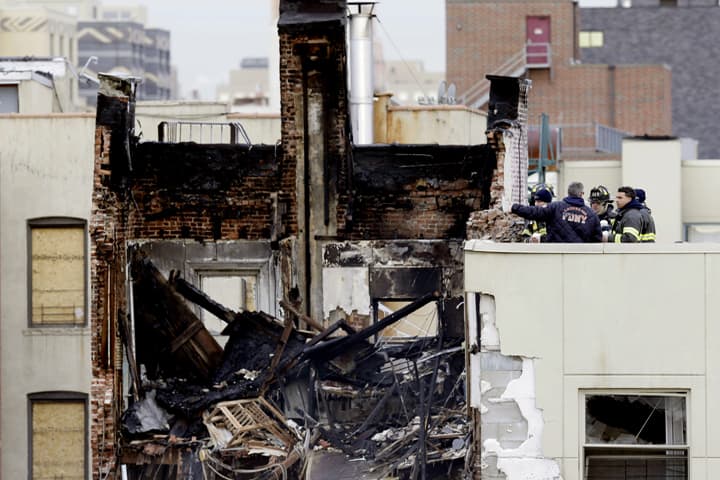Advertisement
The Harlem Blast And Our Natural Gas Infrastructure
New York’s explosion in Harlem is a grim reminder of the country’s enormous and aging gas infrastructure. We’ll look at the risks and looming costs of what lies beneath.

They’re still digging in New York – East Harlem – trying to find bodies and gas lines after the big explosion last week that brought down two buildings and left eight dead. Exact cause of the explosion is still not named, but everyone’s looking at old gas pipes – a century and more old. America’s natural gas infrastructure leaks many billions of cubic feet of gas every year. You may smell it on your street. And that’s just the beginning of this country’s infrastructure issues. Roads, bridges, airports, water systems. This hour On Point: On gas and beyond, the bill due for American infrastructure.
-- Tom Ashbrook
Guests
Chris Kirkham, business reporter for the Huffington Post. (@c_kirkham)
Rob Jackson, professor of environmental sciences at Duke and Stanford.
Robert Puentes, senior fellow with the Brookings Institutions' Metropolitan Policy Program. (@rpuentes)
From Tom's Reading List
Associated Press: Explosion a Reminder of NYC's Aging Infrastructure — "Even while the cause remains unknown, a deadly blast that leveled two buildings served by a 127-year-old gas main has provided a jarring reminder of just how old and vulnerable much of the infrastructure is in New York and many other cities nationwide. A detailed report issued only a day before Wednesday's explosion in East Harlem estimates that $47 billion is needed for repairs and replacement over the next five years to spare New York from havoc."
The Wall Street Journal: Aging Park Avenue Gas Pipe Eyed as Possible Cause of Explosion — "Authorities said they had yet to pinpoint the cause of the blast, which leveled two apartment buildings and killed at least three people and injured more than two dozen. If officials determine that the explosion was caused by a gas pipeline, it would likely rank among the deadliest such incidents since February 2011, when a gas pipe exploded in Allentown, Pa., killing five people."
Washington Post: U.S. Infrastructure gets D+ in annual report — "Using ratings by civil engineers in every state, the ASCE gave the national infrastructure an overall grade of D-plus, an average pulled down by some of the biggest problem areas — aviation, drinking-water supply, roads, transit and sewage treatment "
This program aired on March 17, 2014.